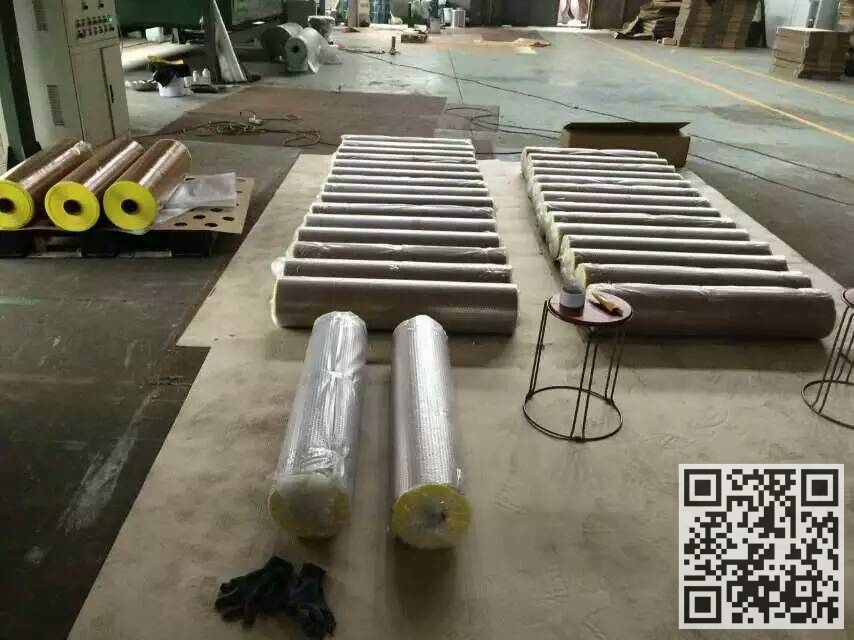
With the vigorous development of modern science, many new materials that were previously unknown continuously appear in scientists’ laboratories. New materials, including superconducting materials and nanomaterials, were born in this period. Among them, some of the new materials are unexpected, and carbon composites are one of them.
However, this accidental new material has now become a “big shot” in the field of high-temperature resistant friction materials, which is used to produce brake discs and other high-temperature resistant structural parts. Carbon composites are also used in the brake discs of C919 large passenger aircraft.
Chance Vought Airlines in the United States made some mistakes in the study of carbon fiber/phenolic resin composites in 1958. The resin substrate was not oxidized and formed matrix carbon by pyrolysis. This is the world’s first discovery of carbon composites.
When it comes to composites, the resin composites are most common. It is a composite material made of resin (matrix), carbon fiber and fiberglass (reinforcement). The carbon fiber/phenolic resin composites mentioned above is a widely applied resin matrix composite material.
Carbon fiber reinforced resin composites are widely used in aerospace and other industrial fields because of their high specific strength, specific modulus, good ductility and so on. Because of earlier research and popularity, composites are equivalent to carbon fiber reinforced resin composites in many people’s concepts.
In fact, composites refer to a new material with special functions and structures composed of two or more heterogeneous, and heterosexual materials (one as a substrate and others as reinforcing bodies. In addition to carbon fiber reinforced resin composites, there are carbon composites, metal-based ceramic composites and so on.
Carbon composites are composites with carbon fiber as reinforcement and other carbon materials as substrates. They developed slowly in the early stages of the study until 1969. When the first batch of high-performance and low-cost polyacrylonitrile (PAN) carbon fibers were commercialized and became carbon composites enhancements, which resulting in significant advances in carbon composites in strength. And carbon composites have begun to arouse the attention of engineering circles.
After decades of research, the carbon composites produced by modern technology have the characteristics of high specific strength, high temperature resistance, and excellent friction and wear performance. They can meet the comprehensive performance requirements of aerospace for materials at high temperature and high speed. Therefore, carbon composites have become one of the key directions in the development of the new generation of aerospace materials.
How much energy does the aircraft brake disc absorb?
Aircraft braking system generally uses hydraulic braking technology (except Boeing 787). It provides power by the engine for the hydraulic pump. The pump will converse to high pressure from low, and transmits the pressure to the brake actuator through the hydraulic pipeline. The actuator pushes the brake disc. Through friction between the brake discs, it provides a torque to prevent the wheel rolling, in order to reduce the speed of the aircraft sliding.
The brake disc, which sounds simple, is not simple at all. When the plane lands quickly, there is a lot of energy. According to the conservation of energy, the aircraft needs to rely on the anti-push device and brake device to absorb the huge energy (of course, pneumatic resistance can also help a little), so that the aircraft can be static. The brake disc converts most of the aircraft’s kinetic energy into heat in the friction process, so the operating temperature of the brake disc is at least hundreds of degrees Celsius.
In addition, the aircraft braking system is designed to take into account a number of possible contingencies in operation, which put higher demands on the brake disc. For example, the plane needs to abort takeoff for unexpected conditions when it is ready to take off in the high speed skating runway. Soon after the plane took off, it was found that a system failure and needed to be returned, and at this time the flaps could not be fully opened. The challenge for the brake disc is that it needs to absorb much more energy than the normal landing situation for these unexpected conditions.
One of the toughest challenges is the second mentioned above, in which aircraft designers carry out the “harshest landing stop test” to verify if the brake disc meets the design requirements or not. Under this test condition, the aircraft is heavier than the normal landing situation (the fuel tank is almost full), faster, less aerodynamic resistance (the flaps cannot be fully opened), and the reverse push device is closed, so it almost all rely on the brake disc to absorb the aircraft kinetic energy.
So how much energy does the brake disc have to absorb in this case? The energy is about 360 trillion KJ, based on that the plane’s weight is 78 tons and the landing is at 200 knots. If you remember the high school physics, 1 joules of energy can lift a 1N object up to 1 meter. Assuming that the 1N object is a small apple, then 360 trillion KJ of energy can lift 36,000 tons of apples up to 1 meter, or lift the small apple 360,000 kilometer–that is almost the distance from earth to the moon.
At this time, due to the absorption of huge energy, the temperature of the brake disc raised sharply that reached more than 1000 degrees Celsius. High temperature makes the brake disc present bright orange that just like a hot fireball.